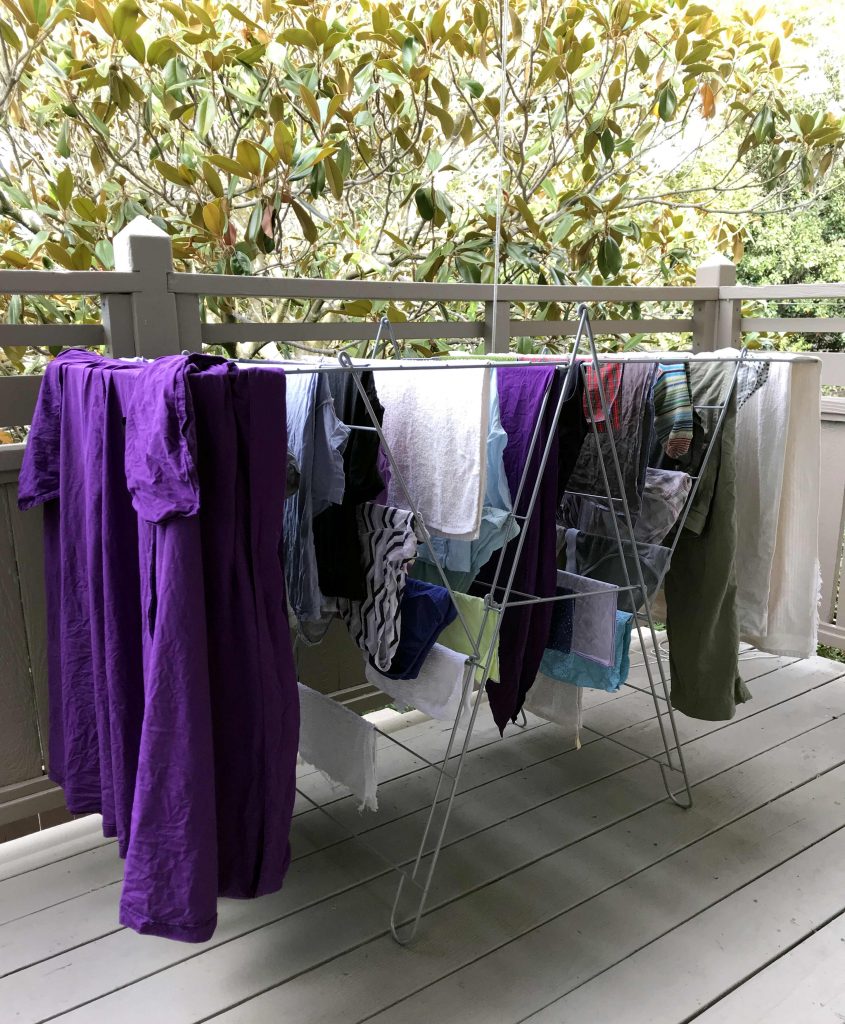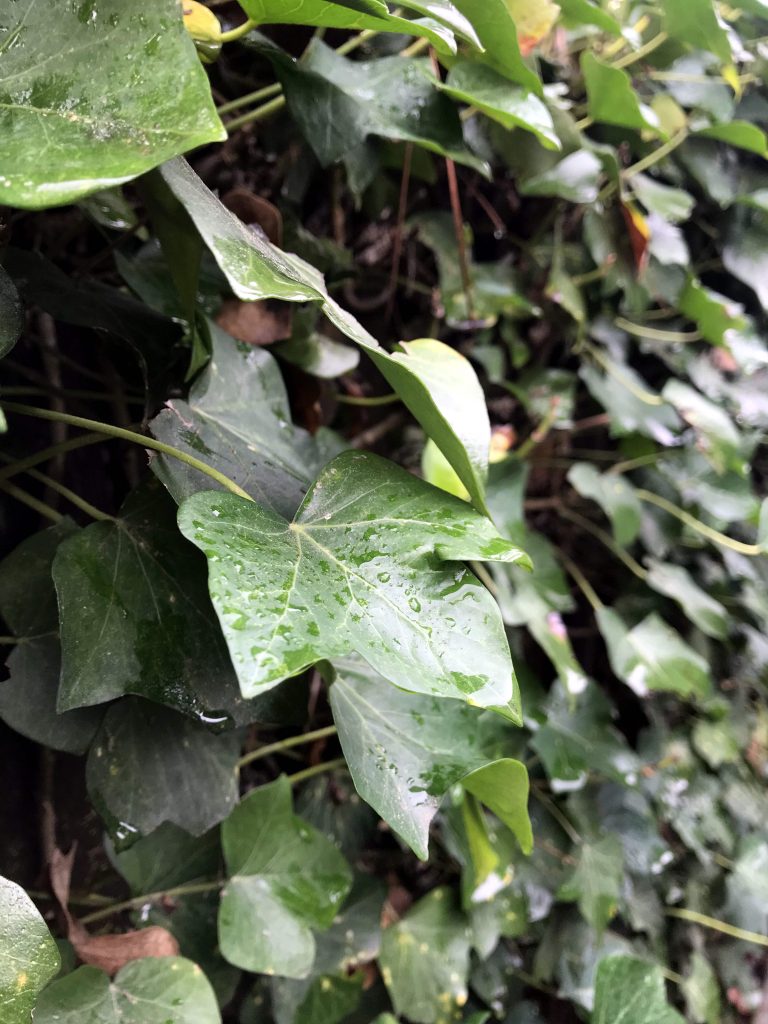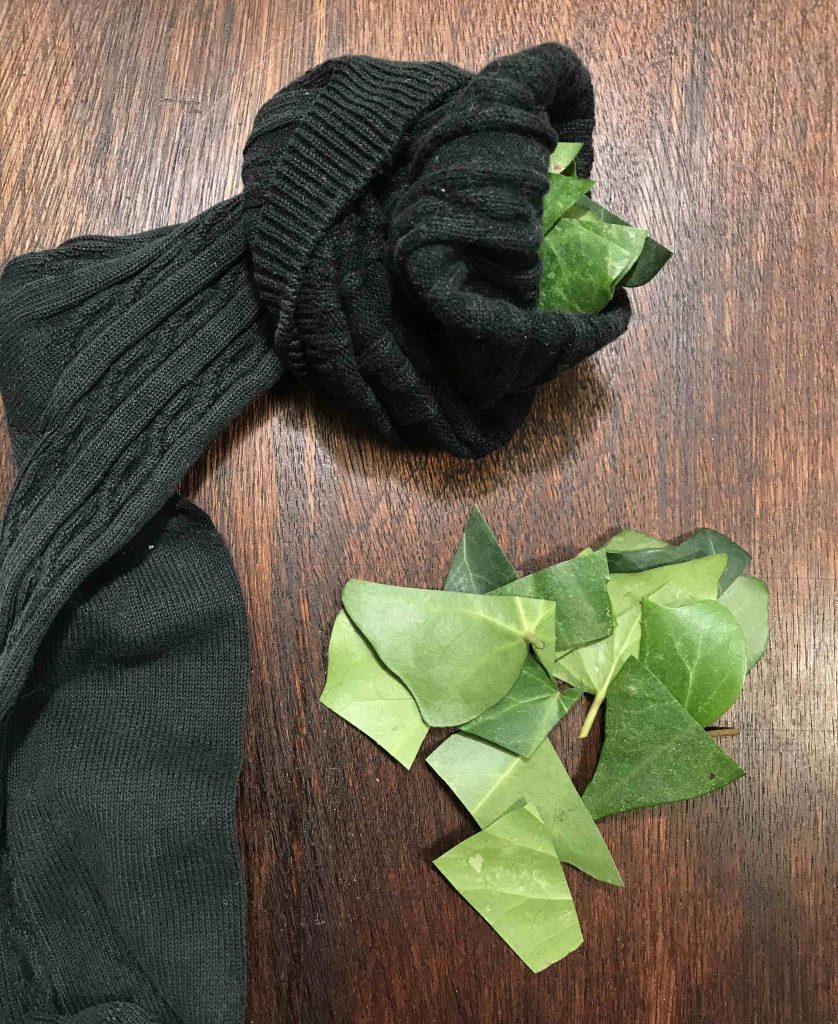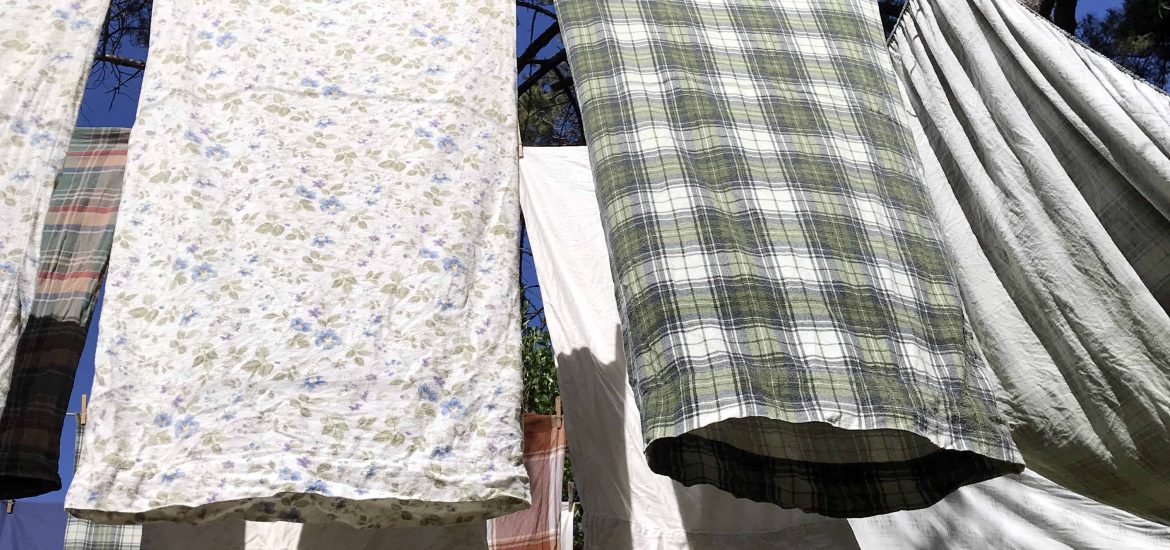(With apologies to Michael Pollan for another riff of his quote, “Eat food. Not too much. Mostly Plants.”)
Why Does She Keep Posting Pictures of Her Underwear?
Every several months, I’ll post a picture on Instagram of my laundry drying outside on my drying rack. I hear two basic reactions.
- Americans: “OMG where did you get your drying rack? I’d love one like it.”
- Everyone else: “Why are you posting this?”
In most of the world, hanging up clothes to dry is normal, non-Instagrammable behavior. Here in the US, where many home owners associations (HOAs) ban “unsightly” clotheslines, hanging up your laundry to dry like God intended racks up the likes and confers rebel status. Many of these HOA bans appear to be illegal, however.
Laundry rule #1: Wash only when dirty
You will save time, energy and money by washing clothes only when they actually need it. Unless I spill tea all over myself while sitting at my desk writing and editing all day on my laptop, my clothes stay clean. I’ll wear even my wool or cotton socks for (at least) a couple of days in a row if they pass the sniff test.

Washing
Although I hang my clothes to dry, I have not begun to manually wash them by beating them against rocks except for that one time in the Caribbean while skinny-dipping. I do use a washing machine.
Use cold water
- Heating water for a load of laundry consumes 90 percent of the total energy required to wash that load.
- Hot water breaks down fabric faster than cold water does. Washing synthetic fabrics—polyester, acrylic and blends—in cold may shed fewer plastic microfibers. A typical load can shed 700,000 of these tiny plastic fibers, which enter our waterways and all levels of the ocean food chain, from plankton to marine mammals—and eventually us.
- Clothes washed in cold last longer. You’ll repair and replace them less often and thus buy fewer clothes.
Avoid the delicate cycle
A recent study found that the delicate cycle can release an additional 800,000 plastic microfibers. The study revealed that the more water used, the more plastic microfibers released. The delicate cycle uses up to two times as much water as the regular cycle.
While washing machines cannot capture these microfibers, Guppyfriend bags, which Patagonia sells at cost, reduce the amount of microfibers that washing machines release.
Wash full loads
Get your money’s worth and do full loads. Whether you wash two towels or a full load, your machine will use the same amount of energy to wash them.
Skip the fabric softener
When your nose detects a fragrance, your brain should think phthalates. Fabric softeners may contain these endocrine disruptors. Studies have linked phthalates to an array of negative health outcomes, such as “hormone changes, lower sperm count, less mobile sperm, birth defects in the male reproductive system, obesity, diabetes and thyroid irregularities.” The Environmental Working Group (EWG), which rates the safety of household products, gives fabric softeners an abysmal F.
Check out ivy leaves as detergent
Let me start off by saying that I need to experiment with this method more and am by no means an ivy-as-detergent expert. For more adventures in washing with ivy, please read the posts of @cleareasmud on Instagram, who told me about this trick.
I’ve been cutting up large English ivy leaves (otherwise known as common ivy or Hedera helix), putting them in an old sock, tying up the end to keep the ivy from going all over the place and then throwing the sock into the washing machine. For my last load, I used 15 grams of leaves. Never use poison ivy leaves!
Ivy leaves contain saponin, a natural detergent and foaming agent. (“Saponin” comes from the Latin word for soap, “sapo.”) Other sources of saponins include horse chestnuts, soapwort and soap nuts.
I don’t know if the ivy works or the agitation of the machine alone cleans the clothes and we’ve all been duped into buying more products than we need. I do know my clothes come out clean. However, they don’t go in very dirty. Someone on Facebook told me that her family’s very dirty clothes come out of the wash clean with the addition of mere vinegar and no detergent. (However, I’ve also read that vinegar in a front-loader can damage the rubber gasket.)
On my long to-blog list, I’ve added “make liquid detergent from ivy.” To do this, you simmer the leaves in water and strain. I hope it works well. (Go here for laundry detergent made from horse chestnuts.)


Drying
According to the US Energy Information Association (EIA), clothes dryers account for 5 percent of total household energy consumed in the US, while washing machines account for only 0.5 percent of household energy, not including the energy to heat the water in warm or hot loads.

If you dry laundry in a dryer
Spin it right round, baby right round
Spin your clothes in the washing machine for a longer amount of time than the standard cycle lasts. Your machine may have a high spin cycle or other cycle that you can set it to for a longer spin. This will reduce the amount of time your dryer will have to run to dry your clothes.
Buy a pair
I rarely use the dryer and so haven’t bought a pair of 100 percent wool dryer balls myself but people rave about them online. By absorbing water and increasing the air flow around laundry as it dries, these balls apparently reduce drying time. (As I said, I haven’t tried them myself.)
Look for an efficient model
When you replace your dryer, look for one with the Energy Star label. To earn this label, machines must be pass independent certifications while functioning well. If you can afford it, consider buying a heat pump dryer. These recycle the hot air in the dryer rather than wasting it by venting it outside.
Clean out the lint
Clean out the filter after drying each load. If the lint contains synthetic fibers, I would not add it to the compost pile.
Skip the dryer sheets
These single-use throwaway synthetic (i.e., plastic) sheets can, like fabric softener, contain phthalates. Avoid over-drying your laundry to avoid static electricity shocks.
If you hang laundry to dry
Buy clothes less often
Dryers break down fibers. Hang your laundry up to dry and it will last much longer. Yes, hanging takes more time but I find it meditative.
Send less money to your utility company
Instead of Zero-Waste Chef, I could have named this blog “Zero-Waste by Default for Frugal People.” You’ll save money if you hang up your clothes to dry or if you follow any of the tips I’ve listed in this post.
Does anyone actually like their utility company? Here in Northern California, PG&E sparked outrage in October for cutting off power to hundreds of thousands of residents after weather forecasts predicted high winds and severe fire risk.
A probe into the devastating Camp Fire of 2018, which killed 85 people and razed the town of Paradise, found that PG&E’s power lines ignited the blaze. The company, now in bankruptcy, could face more liability claims if its equipment starts more fires. Hence, the blackouts.
No one wants the state to endure another mega-fire. Outrage over the outages stemmed from the fact that PG&E has not updated its infrastructure and instead, inconvenienced a massive number of residents, some of whom had to evacuate their homes because of medical issues.
Hang up your laundry to dry and stick it to the man.


I love to see washing on the line…a common sight here, we don’t have a water heater as it is so warm that the sun heats the pipes which means my washing is washed in tepid water as it never gets that cold. I thought using ivy leaves was an interesting idea…one I haven’t heard of before 🙂
Thank you for these inspirational tips, I dry my washing outside only as I don’t have (and don’t want) a tumble dryer, however, living in Scotland, it is not always that easy or quick 😀 Will definitely start cold washing, thanks again!
Since I live in a small apartment and don’t have a washing machine, I wash everything by hand in the bathtub. This is a fair amount of physical work, so I naturally only wash items when they really need it. Bonus #1: this gives me a free upper-body and arm workout!
I have always hung out laundry to dry, but since moving into an apartment I’ve had to adjust (no yard and no clothesline), In warm weather, I hang out laundry to dry on racks on my balcony. In cold weather, my windows are covered with plastic to keep out cold drafts, so I dry laundry on racks inside my apartment. Bonus #2: this adds much-needed humidity to my apartment in winter!
But this is time-consuming and, the washing especially, is a lot of work; I really don’t recommend it to anyone with children. And frankly I would much rather have a washing machine.
Really interesting and informative. But one very important correction: God should be capitalized in this particular usage.
Thanks Anne Marie, my Joan de Arc of the zero waste movement. You are on my bucket list of people I’d like to meet one day. Right next to Nancy Pelosi. 😘
Unfortunately, two of my children are allergic to dust mites, and I was told by an allergist several years ago to wash with hot water, especially bedding, and especially if I was going to hang dry. Their eczema in particular has been much better since I started doing that.
I have hung clothes dry in the past, but in our basement (we live in a second-floor condo). For whatever reason, we end up with a lot of lint on our clothing when that happens, and while a lint brush gets off some of it, it’s pretty hard to remove all of it from the towels. I could live with it, but my children and husband complained enough that in the end I went back to the dryer.
There are a number of plants that contain saponins that can be used for various types of washing, https://pfaf.org/user/cmspage.aspx?pageid=49. I haven’t tried any yet but have been thinking about it. There are also soap nuts available commercially that are often packed in muslin bags. I haven’t tried those either (they must be expensive). I will definitely try ivy leaves as they are abundant and invase where I live. Thanks for the suggestion!
I spent the last year hand-washing my laundry and my big take-away was the importance of the spin cycle! Clothing washed in a machine dries MUCH faster on the line due to having been spun out. My hand-wringing can only remove so much moisture, and in the humid Virginia summer without access to an outdoor area with full sun, my clothes often came out a little musty. If I were to keep hand-washing in the long term, I’d be interested in getting a mangle to wring out my clothes.
I’d never heard the ivy tip, thanks for sharing… time to track down some ivy vines 🙂
Even during the ten years we lived in a condo, I hung laundry (using clothes hangers) across the bathroom shower bar to dry. Now I have a mesh/wire (I think that’s how it might be described) shelf above my washer and dryer. To get wrinkles out I fluff clothes in the dryer for a few minutes then put them on regular hangers, which I hang from the shelf, leaving a little space between items for air to flow. I put pants on clip hangers. Socks get draped over the rim of the laundry basket. Underwear goes on a 10-clip circular hanger that I found at Wal-Mart (sorry to promote the store). In the winter everything’s dry in 24 hours. Not only have I saved energy but everything comes out wrinkle free.
Ivy? Wow! Sounds like a good way of getting rid of that invasive pest. I admit I’m a little uneasy about it. Maybe I’ll try it with my husband’s grubby pants.
Nancy
Any recommendations on how to incorporate line drying with two little kids, plus living in Maine? I dry what I can on a drying rack inside, but I need to use our dryer to keep up. Would love not to!
My laundry room walls and ceiling are not finished. I took 4 coat hooks and mounted them on the exposed studs, 2 at each end of the room and high enough that I could still walk under them. Then wrapped my clothes line around the hooks. Not sure if that helps, but it works quite well for me.
Hi Michelle, I moved to the US from Switzerland, where the weather is not always nice for hanging clothes outside. We now live in California, where the weather is very nice to hang clothes, but the sun is strong and demanding in regards of the laundry rack. When we moved I brought with me this rack https://urbanclotheslines.com/stewi-libelle-compact-laundry-rack.html. Last Spring, after 25 years I had to replace my old one and bought the same. I was so very happy to find that you can buy it in the US too. There are not too many racks that have such a dependable track record. Also you can slide the lines up or down, so even hanging fitted sheets, cloth table clothes and duvet covers pose no problem.
In Winter you can bring the stand inside. I personally have another solution. My husband has mounted a similar rack in the garage and an electrical wrench. That way my dear husband doesn’t get slapped by wet laundry when getting off the bicycle after work.
I hope this works for you as well as it has for me. All the best. Andrea
I live in London and have two children. We dry as much as we can outside in the summer, but struggle in the winter. We’ve got a covered bike shed which is open at both ends and we hang clothes there during the winter. It took us 10 years of living in the property before we realised that this was an option and now we use it all the time! It still takes a couple of days to dry so now we’re putting a traditional cast iron pulley dryer at the top of our house where there’s quite a lot of headroom above the stairs. This should mean that we only have to use the dryer for emergencies or for large duvets etc which won’t linedry.
I have four of those drying racks from Ikea and love them! I live in Minnesota where it is frozen half the year and haven’t used my dryer for anything for over four years. I never thought I’d be able to do it, but it’s possible. My neighbor told me last summer that he is happy to see my laundry out on the line because then he knows it is going to be a nice day 🙂
Thanks for this post Anne Marie! I discovered H2 – Rechargeable Laundry Ball. The ball contains 3 types of ceramic beads which enhances the cleaning properties of water and softens textile fibers so impurities are detached easily. With the ball in my washing machine, I can use 1/3 of the detergent for really soiled laundry and just the ball alone for less dirty laundry!
I never in my life used a dryer and I think it’s such a waste of money, as air and a drying rack does EXACTLY the same job and you can just leave the laundry and don’t care about it….. 😉
Here is a frugal guy. But first, using cold water for laundry means the soap is not activated and goes down the drain. I use a warm and cold choice in my machine. Using solar dryers – don’t be concerned if the sun does not dry the clothes on the rack in one day. I’ve been known to leave clothes out on the line in winter in Minnesota for a week or more. They go from frozen to dry eventually – and they smell so good when they are brought into the house.
When I sold my house last year the buyer couldn’t believe my monthly electric bill averaged $63 for more than 10 years. The utility company changed the meter 3 times in one year thinking I was tinkering with it. I was just a frugal user of electricity.
I love this article and the reference to Michael Pollan.
I do many of the things you wrote about in the article. I didn’t know about the ivy, Soapwort can also be used to make soapy water. Ivy is a terrible invasive plant where I live so using it for a good reason would be a fine thing. I make my own soap powder, I don’t use my dryer except for emergencies and I have dryer balls…they work for me. They will minimize static but they don’t soften clothes, but I like hard towels-more absorbent.
You can make your own dryer balls from old wool sweater from the thrift store, just cut a circle about 8″, baste around with some of the the yarn and pull closed, filling with cuttings of the sweater as you tighten, sew the opening closed and toss it into the wash to felt down.A couple of these in the dryer will work well
I do 2 loads of laundry per week, we wear the same clothes all week,except for my underwear which I handwash
I have cold feet so my socks are worn all week also, as they pass the sniff test.
My washer is about 25 years old and my husband has repaired it in the past. My dryer is 15 years old and at the rate we use it- it will last forever.
As a Brit it bamboozles me to think of people not air drying their clothes. With the damp weather here it’s not always possible to do it outside though. Over the winter, for instance, we dry ours on a wire rack much like yours in front of the radiator. A fairly common practice here unless you have radiators large enough to put things on directly. We’ve a small place, but if you put it out before bed and let it dry over night then it’s not too much hassle. Would that be a way to get around the ‘unsightly washing’ rule for some?
I’ve never heard of using ivy for laundry before! The stuff is everywhere so it would certainly come out much cheaper. I shall have to do some test loads but I’m incredibly intrigued by the idea. Thank you for sharing!
I’m trying to air dry my clothes as much as possible. In the summer, it’s not a problem in California. But in the winter, I found it hard to tell if my clothes are actually dry. Like it still feels cold to the touch but not soaking wet. We only have central heating in the house. I dry it in the sun for a day, then leave it in the house for another day or so to keep drying. Any tips?
I’m from Shanghai, China. And I like your posts and come back here often. I would like to follow your advice, with just one thing unsure. You talked about cold water. But here, we think warm water would help soap or detergent more active. Should there be some balance?
Besides, I’m glad that some parks in Shanghai is open again, although still semi open. Wish the situation around the world would get better soon.